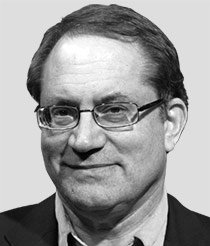Back in 1998, my firm visited with a prominent money manager in New York City.
At the time, we were trying to raise money to invest in less‐than‐investment‐grade corporate debt. We attended the meeting and, to put it politely, we were given the brush off. That was no big deal - it happened all the time.
But what that money manager said struck us as very odd...
"Why should I give you guys money?" he asked. "You can't make me one point a month like my friend can."
We responded, "It's not a 'point‐a‐month' world." And that was that.
Several years later, in 2005, we were sitting in front of another group that said it was interested in raising money for us.
The talks proceeded to the point where we were invited to meet with the company's founder and his top lieutenants.
These gentlemen explained they were looking for another product to add to the offering of their "winningest" manager, who was producing "consistent monthly returns in the 80 to 100 basis-point range."
That they were looking for a new product wasn't unusual. But the manager's purported returns sure as hell were. Stranger still, they wouldn't name the manager. The guy's identity was treated like a national security secret.
What's more, these gentlemen stressed repeatedly that they could not consider a strategy that might potentially expose them to losses of as much as 2% a month. Of course, we told them it would be impossible to guarantee that there would never be monthly losses.
Needless to say, the talks went nowhere.
In 2008, barely three years after that bizarre, fruitless meeting, the "winningest" manager with the top-secret name was in handcuffs, perp-walked across every television and front page in the Western world.
We'd had a brush, of the faintest kind, with Bernie Madoff.
Because of simple common sense - the certain knowledge that it's not "a point-a-month world," and a grasp of the fact that any investment can lose money - neither we nor our clients were ever in danger from the con man's massive fraud.
But the same can't be said of Madoff's 4,800 victims, of course, who lost close to $65 billion. On top of the financial ruin, at least two people killed themselves as a result of the Ponzi scheme, including Madoff's own son.
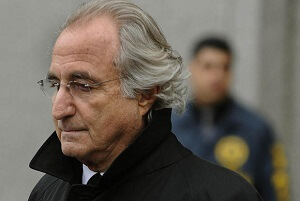
Now here's the really horrible thing: You might think the book is closed on Bernie Madoff. But the story didn't end when they slammed the cell door shut on him at the Federal hoosegow at FCC Butner.
Federal Prisoner No. 61727-054, and every single money manager unwittingly "infected" by him, are still costing unsuspecting investors millions of dollars.
Let me show you why that's the case, and what you can do to make sure you're not among the next set of victims...
Madoff's Impossible Model Is an Enduringly Seductive Virus
The money manager we met in 1998 was Ezra Merkin, whose funds lost a reported $2.4 billion with Madoff.
The money-management firm we met in 2005 was Fairfield Greenwich Group, whose clients reportedly lost more than $7 billion in the Madoff fraud. The firm's now disgraced founder Walter Noel attended that meeting, but let his minions do most of the talking.
The truth is Bernie Madoff led Merkin and Fairfield Greenwich, along with many other respected investment institutions, to expect the impossible: high returns with low risk.
Madoff created a virus of sorts that has infected the capital management practices of the professional investment class.
Madoff’s scheme had a deeply pernicious effect on the investment management business long before it was revealed to be a complete fraud.
Madoff's own peculiar sickness is still raging in the wilds of Wall Street today, even though the man himself will (quite rightly) die in prison, sentenced to remain locked up until the mid-22nd century - Nov. 24, 2139, to put a point on it.
You see, Bernard Madoff Investment Securities offered investors what they think they are supposed to seek in all of their investments: steady returns and minimal risk.
This is what fiduciaries, those with the legal obligation to put the financial interests of others ahead of their own, are taught to pursue with both hands.
Unfortunately, when the curtain was pulled back on that particular wizard, what was discovered was a virtual checklist of the worst investment practices imaginable - practices that "knowledgeable" investors such as Merkin and Fairfield Greenwich were paid obscene amounts of money to sniff out and avoid.
These practices included...
- a total lack of transparency;
- financial statements prepared by a hole‐in‐the‐wall accounting firm; and
- the so-called "split-strike conversion strategy," an investment strategy that could not possibly generate the returns Madoff boasted... in any markets on the planet Earth.
Yet fiduciaries such as Merkin and Fairfield Greenwich, as well as a laundry list of other respected investment institutions, such as Tremont Group Holdings owned by MassMutual, Banco Santander SA (NYSE ADR: SAN) of Spain, the Swiss fund‐of-funds firm EIM SA (now Gottex Fund Management Holdings Ltd. [SWX: GFMN]) and many other prominent investors, were lured by the promise of month after month of consistently positive (but not too positive, which was an essential part of the scam) returns.
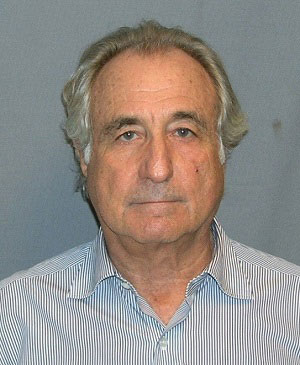
The knowledge that such returns are virtually unattainable (and certainly not with the strategy Merkin was claiming to pursue) and that their purveyor refused to reveal how he produced them was apparently insufficient to dampen investors' hunger for them, suggesting just how rare and valuable such a return profile would be if it were truly achievable in the real world.
Madoff's scheme had a deeply pernicious effect on the investment management business long before it was revealed to be a complete fraud.
In addition to casting a cloud of suspicion on other money management firms, particularly small independent firms that are not part of large institutions, Madoff's scheme distorted investors' perceptions about the kind of returns they can reasonably expect.
This is critical. It is the fundamental aspect of the Madoff affair, and it has been insufficiently acknowledged.
What's worse, it's an essential part of the reason why capital continues to be so poorly managed by the professional investment class, nearly six years after Madoff went down to prison.
Because of This, Hedge Funds Have Trillions at Hazard
The essence of Madoff's scheme was the proffer of consistent returns with low risk. To some people, this may seem like a reasonable proposition, but experienced and knowledgeable market participants should know that only a few managers can deliver on such promises, and none whatsoever can promise to do so at all times and in all market conditions.
[mmpazkzone name="in-story" network="9794" site="307044" id="137008" type="4"]
This should particularly have been the case with respect to Madoff's track record, which purported to show consecutive years of positive monthly returns with few if any negative months and no correlation to what was occurring in the financial markets.
We do not live in a "point‐a‐month" world; it is a world of fat tails and, in the term that Nassim Nicholas Taleb made famous a few years later, "black swans," like the recent Brexit vote.
Yet Madoff's return pattern captured the imagination of the professional investment class and led it down the road to ruin in the fast lane.
It also led to many imitators as institutional investors came to demand that other managers offer the same impossible model. This is one of the ways that the road to investment hell became littered with fiduciary intentions.
It is hardly a coincidence that the explosion of so‐called "alternative investments" in the hedge fund industry coincided with the growth of investment strategies that offered consistent low‐risk returns.
By the end of 2006, the cusp of the financial crisis, Hedge Fund Research Inc. estimated that the global hedge fund industry held $1.43 trillion in assets. These assets were spread among 11,000 different funds of which approximately one‐third were funds‐of‐funds, according to the European Central Bank.
This was a huge jump from 1990, when hedge funds held less than $400 billion in assets, and even from 2005, when the $1 trillion mark was passed.
Since the financial crisis, hedge fund assets more than doubled again to $3.118 trillion as of June 2015, according to eVestment.com, despite the fact that their performance has been extremely disappointing on both a nominal and risk-adjusted basis.
This growth paralleled the growth of private-equity assets and related strategies that invest increasing amounts of capital in illiquid securities that can only be valued by their managers rather than by reference to any independently verifiable market standard.
The two concepts - alternative investments and consistent positive returns - were joined at the hip in a symbiotic relationship that turned into a dance of death during the financial crisis. With some exceptions, the hedge fund model became one in which managers offered investors the prospect of consistent, uncorrelated positive returns in exchange for exorbitant fees.
Investors have seen, though failed to learn, what an illusion this is since the financial crisis, and especially since 2014, when many of the largest funds began to falter.
What these funds did was adopt an investment model in which they offered the illusion of steady high returns with low risk.
Some funds did this using highly liquid securities and high degrees of leverage, such as credit arbitrage funds, and others invested in non‐public debt and equity securities in the credit space, like the many highly leveraged credit‐oriented hedge funds that blew up in 2008.
These funds collected a lot of illiquid investments and ended up retaining the least valuable ones through a process of adverse selection when forced to sell. Many of these funds either blocked redemptions (i.e., "gated" their funds) or offered to return assets "in‐kind" to investors (which from an investor's standpoint is the equivalent of winning the booby prize).
Realistically, there is nothing else these funds could do with these investments; they certainly couldn't sell their illiquid assets to anybody at the bottom of the market.
In order to deliver steady streams of positive returns, however, hedge fund managers claimed they were following strategies that were "uncorrelated with the financial markets."
What I'm about to say was true when we said it to Ezra Merkin in 1998. It is true today. And I'm willing to bet it will be true when Madoff's sentence is up in 2139...
What does uncorrelated mean? We all know what it is supposed to mean - returns that are not correlated with the movements of other risk assets such as stocks.
But what uncorrelated really came to mean was something else entirely: Madoff‐type returns, which were simply fraudulent, or private‐market‐type returns, which were based on nonpublic market valuations that could not be confirmed by liquidity events except on a sporadic basis.
The latter type of investments included private equity, direct lending to small and midsize companies, structured products, and similar investment strategies (my favorite is investments in timber, where you have to wait years for the trees to grow to see a return on your capital).
Some of the largest hedge funds in the world managed by firms such as Cerberus Capital Management LP, GoldenTree Asset Management LP, and Highland Capital Management LP engaged in these strategies and grew to enormous sizes before running aground in 2008.
Their losses called into question their reported returns in earlier years to the extent that those returns included unrealized gains that were later reversed by losses.
But in order to compete with Madoff, to manage the money of institutions that believed in the prospect of low volatility/high returns, firms that wanted to grow had little choice but to follow these strategies.
Markets Are Still Operating Under the Madoff Illusion
This approach worked out just fine as long as the markets were rising, or at least when they weren't experiencing extreme volatility.
As long as global liquidity was robust and markets were stable, these strategies looked successful on the surface. Funds could continue to borrow to bid up the prices of financial assets, and managers could continue to convince investors that their investments were worth more each year.
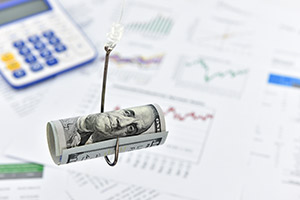
But when credit markets seized up, these strategies were swamped by three simultaneous tsunamis.
First, the value of their leveraged assets started to decline precipitously. Second, their lenders became nervous and demanded more collateral to support their positions (or, if no more collateral could be posted, forced funds to sell assets at fire-sale prices). And third, these firms could no longer convince investors to keep feeding them money and in many cases were faced with requests to return capital.
When the markets sold off, many investors wanted their money back. The problem was that these investments were completely illiquid and investor capital could only be returned in kind or not at all. Returning cash to investors was out of the question because capital had died.
This was how Madoff's Ponzi scheme came apart: It relied on a continual stream of new money to pay interest on investor capital and to handle the return of capital to investors who requested their money back. But when such requests grew increasingly large (reportedly to $5 billion or $6 billion by late 2008), there simply wasn't enough new money coming in for Madoff to honor them, and the scheme fell apart.
Many legitimate hedge funds (that unlike Madoff's actually engaged in real investing and trading strategies) suffered the same fate and were forced to suspend redemptions, return capital in kind, or close shop.
This was not only another example of a flawed financial strategy that confused long‐term solvency with short‐term liquidity by borrowing short to lend long, but also emblematic of the fact that institutional investors were seeking an impossible Holy Grail of consistently high, positive returns with low risk.
One has to wonder how differently things might have turned out had Madoff's fraud been discovered much earlier and the investment community come to an earlier understanding that markets don't serve free lunches.
What's so hard to understand about that? Well, for one thing, the confusion is perpetuated...
Madoff Led, but Government and Society Pushed
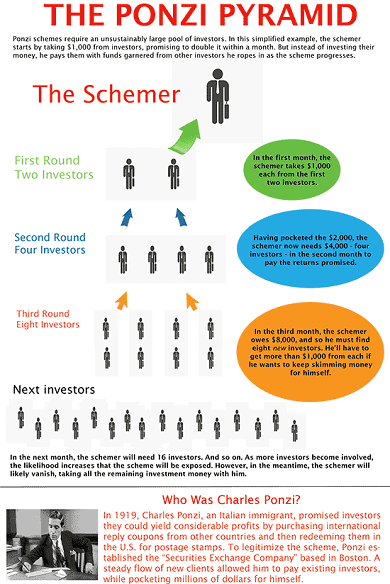
The real question that should be asked is how so many investors could be led to believe that such strategies were prudent, or even possible.
After all, for nearly 200 years, the "Prudent Man Rule" has been the basis on which most fiduciaries have based their conduct.
How could an entire generation of investors be duped into believing in concepts that are so blatantly false?
Like many of the other intellectually corrupting influences such as the efficient markets hypothesis, investors were given a mighty helping hand by the political and academic authorities.
In particular, the U.S. legal system adopted a doctrine of fiduciary duty that narrowed the focus of those charged with investing other peoples' money to the single goal of economic gain. Other societal interests such as the rights of labor, the environment, and the distinction between productive and speculative investment, were pushed aside.
Learn More: What Is a Ponzi Scheme?
Moreover, an entire industry of consultants and academics developed the intellectual scaffolding to dress up this mandate in pseudoscientific language.
Concepts like "Sharpe ratio" and "R‐squared" and the infamous Greek chorus of "alpha" and "beta" were used to justify investment strategies that could theoretically deliver steady returns with low volatility and low correlation with the stock market.
These arcana dressed the consultants in the garb of a secret ministry holding the keys to the kingdom of gold. The only problem is that when one pulls back the curtain, one finds that that there is no wizard and that the magic formula is malarkey.
There is a perfectly good reason why many of the strategies recommended by the consultant community and other investment advisers don't correlate with financial markets: They involve illiquid securities that are not marked‐to-market or even capable of being marked‐to‐market in any meaningful manner. Accordingly, the entire industry is operating under an illusion from which it would be extremely painful to break free.
It should be noted that there are absolute return strategies that are uncorrelated with the market that can generate consistent high returns without employing high leverage or investing in illiquid assets.
But such strategies are rare. They require a great deal of expertise and discipline. And even they don't earn "a point a month" despite generating consistently strong risk-adjusted returns.
Investors who claim they never lose money are lying. Even the greats such as George Soros and Julian Robertson lose money. The key is that they know how to limit their losses and how to make them back.
Editor's Note: With thousands of Bernie Madoff's acolytes controlling the action on Wall Street, you're going to need protection - soon. Click here to get the protection and profit strategies in Michael Lewitt's Sure Money. There's never a charge, and you'll get access to his "Super Crash Report" just for signing up.
Follow Money Morning on Facebook and Twitter.
About the Author
Prominent money manager. Has built top-ranked credit and hedge funds, managed billions for institutional and high-net-worth clients. 29-year career.



